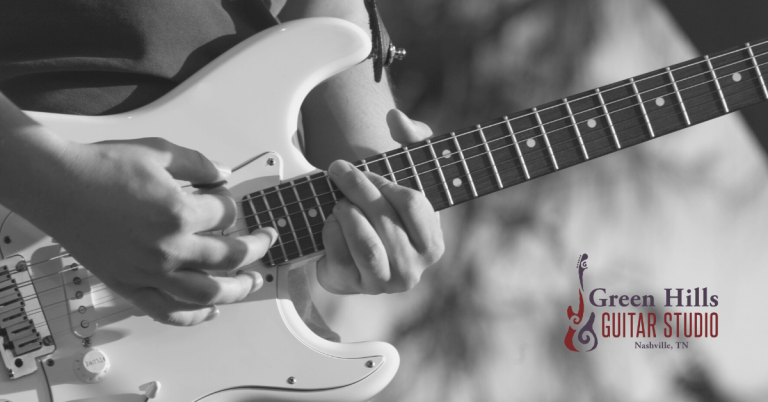How to Create a Practice Routine That Works for Your Schedule
Got a busy schedule? You can still carve out time to improve your guitar skills with a practice routine designed around your life. Whether you’re managing work, school, or family commitments, consistency and efficiency are the keys to progress. When you create a practice routine, you can maximize your time, no matter how limited it might be.
This guide will help you evaluate your schedule, set clear goals, and stick to a plan that fits your lifestyle. By the end, you’ll have a step-by-step strategy to make steady progress, even on your busiest days. Let’s jump in!
Why a Practice Routine Matters
A practice routine isn’t just a schedule—it’s a tool for steady improvement. Here’s why it matters:
- Consistency Leads to Growth: Like any skill, playing guitar requires repetition over time. Practicing regularly, even for short periods, is more effective than infrequent marathon sessions.
- Eliminates Decision Fatigue: Knowing what to practice each day removes the stress of figuring it out on the spot, keeping you focused and productive.
- Keeps You Goal-Oriented: A routine tailored to your goals ensures you’re always working toward something specific, whether it’s nailing a challenging solo or learning a new picking technique.
Step 1: Be Clear About Your Goals
Before you pick up your guitar, take a moment to reflect on what you want to achieve. Being clear about your goals will shape your practice routine and keep you motivated. Here’s how to set effective goals:
1. Define Your Long-Term Goals
Do you dream of performing live? Want to write and record your own songs? Or maybe you’re focused on sharpening your technical skills or diving into a specific genre? Clarifying your goals is the first step toward achieving them.
2. Break Them Down Into Short-Term Goals
For example, if your long-term goal is to perform live, your short-term goals might include learning a setlist of songs, improving stage presence, and mastering transitions between chords.
3. Set Measurable Milestones
Instead of saying, “I want to get better at fingerpicking,” aim for something measurable, like, “I want to play ‘Blackbird’ by The Beatles fluently in 30 days.”
4. Revisit and Adjust Goals Regularly
As you improve, your goals may change. Periodically review and adjust them to stay challenged and inspired.
Step 2: Assess Your Schedule
Finding time to practice can feel daunting, but most people have hidden time pockets in their day. Here’s how to uncover them:
- Identify Time Blocks: Take a look at your daily schedule and pinpoint moments of free time. It could be early mornings, lunch breaks, or a short window before bed.
- Start Small: Begin with just 10–15 minutes a day. This is enough to build a habit without feeling overwhelmed.
- Prioritize Practice: Treat your practice time like an important appointment. Block it on your calendar and stick to it.
Pro Tip: Pair your practice with an existing habit, like playing for 10 minutes after your morning coffee or right before you wind down for the night.
Step 3: Divide Your Practice into Key Categories
Breaking your practice session into categories helps you cover all the essential aspects of guitar playing, ensuring balanced progress across technical skills, repertoire, and creativity. A structured approach also keeps your sessions engaging and focused. Here’s a detailed breakdown of a balanced routine:
1. Warm-Up (5–10 minutes)
Warm-ups are essential to prepare your fingers and hands for the more demanding parts of practice. They improve dexterity, finger strength, and coordination while reducing the risk of strain or injury.
- What to Include: Finger exercises, chromatic runs, major scale patterns, or basic chord transitions (e.g., G to C to D).
- Why It Matters: Warm-ups help you synchronize your hands, ease into practice, and build foundational strength for more complex techniques.
Pro Tip: Gradually increase the tempo of your exercises with a metronome to challenge your precision and speed.
2. Skill-Building (10–20 minutes)
This is the core of your practice session, focusing on improving specific techniques or tackling challenges that push you closer to your goals.
- What to Include: Work on techniques like fingerpicking patterns, mastering barre chords, improving speed through scale drills, or practicing alternate picking.
- Why It Matters: Targeted skill-building helps you develop the technical tools necessary for more advanced playing.
Pro Tip: Break difficult techniques into smaller parts. For example, practice just the barre on a barre chord or isolate tricky picking patterns before integrating them into a full piece.
3. Repertoire (10–15 minutes)
Repertoire practice is about applying your skills to real music. It’s a chance to focus on songs you enjoy and refine the pieces you want to perform.
- What to Include: Work on songs you love, pieces you’re preparing for a performance, or music that introduces new challenges, such as rhythm variations or unusual chord progressions.
- Why It Matters: Playing actual songs keeps practice fun and reminds you why you picked up the guitar in the first place.
Pro Tip: Divide songs into sections and focus on areas where you’re struggling, like difficult transitions or rhythm patterns. Don’t forget to play the whole song occasionally to enjoy your progress.
4. Creative Time (Optional, 5–10 minutes)
Creative time allows you to explore your artistic side and experiment without the pressure of structured practice. It’s an optional yet valuable part of your routine.
- What to Include: Improvise over a backing track, experiment with new sounds using effects or alternate tunings, or start sketching out an original song idea.
- Why It Matters: Creativity keeps your practice sessions exciting and helps you develop a unique voice as a guitarist.
Pro Tip: Record your improvisations or song ideas so you can revisit and refine them later. Even if they’re rough, they might inspire a finished piece down the line.
Example Routine for a Beginner (30 minutes):
- Warm-up: Chromatic exercises and G major scale (5 minutes).
- Skill-building: Practice switching between G, C, and D chords (10 minutes).
- Repertoire: Strum along to “Into the Great Wide Open” or another beginner-friendly song (10 minutes).
- Creative time: Improvise using the G major scale (5 minutes).
Step 4: Tips for Sticking to Your Routine
Even the most well-planned practice routine can fall apart without consistency and accountability. Here are some practical ways to stay on track and make the most of your practice time:
- Use a Timer: Set a timer for each section of your practice to stay focused and avoid spending too much time on one area.
- Set Specific Goals: Break your goals into smaller, achievable tasks. For example, aim to perfect the first verse of a song rather than the entire piece.
- Track Your Progress: Keep a journal or use an app to log your practice and note improvements. This will help you stay motivated by showing you how far you’ve come.
- Be Flexible: Life happens, and sometimes you’ll miss a session. Don’t stress—adjust your routine for the next day and keep going.
- Incorporate Accountability: Private guitar lessons provide regular check-ins, tailored guidance, and valuable feedback to keep you on track. A qualified instructor can help you create a practice routine that balances your goals and schedule.
Step 5: Adapt for Your Skill Level
Your routine should evolve with your abilities. Here’s how to tailor it to your level:
- For Beginners: Focus on fundamentals like chord changes, rhythm, and basic scales. Keep sessions short to avoid fatigue or frustration.
- For Intermediate Players: Add variety to your sessions with new genres, more challenging techniques, and improvisation. Allocate time for music theory to enhance your understanding of the guitar.
- For Advanced Players: Spend more time on creative projects like composing, arranging, or advanced techniques (e.g., chord melodies, hybrid picking). Dive into specific genres or styles to refine your expertise.
Step 6: Overcoming Common Challenges
No matter how well you plan, challenges are bound to arise. Here’s how to tackle the most common obstacles without losing momentum:
- Lack of Time: Are you struggling to fit practice into a packed schedule? Break your sessions into smaller chunks. Even 5-minute intervals—like running through a scale or practicing chord transitions—can make a difference over time.
- Plateaus: Feeling stuck in your progress? Hitting a plateau is normal, but it doesn’t mean you’re not improving. To reignite excitement, try learning a song in a new genre, exploring different techniques, or setting fresh goals.
- Distractions: A noisy environment or competing priorities can sap your focus. Set up a dedicated practice space where you can concentrate without interruptions. Even a quiet corner with headphones and a music stand can help you stay in the zone.
The Coda
Creating a practice routine that works for your schedule is entirely possible, no matter how busy life gets. By being clear about your goals, starting small, dividing your sessions into key categories, and tailoring your routine to your needs, you’ll see steady progress over time.
Remember: even 10 minutes a day can lead to significant improvement. Consistency beats intensity. Start building your routine today, and if you’re looking for expert guidance, Green Hills Guitar Studio in Nashville offers guitar lessons tailored to your goals.






